Daredevil/Love And War 1
Miller & Sienkiewicz – Love and War ( part 1 )
Daredevil (Marvel Comics) Biography
| Daredevil | |
 Promotional art for Daredevil vol. 2, #100 (Oct. 2007) by Lee Bermejo |
|
| Publication information | |
|---|---|
| Publisher | Marvel Comics |
| First appearance | Daredevil #1 (April 1964) |
| Created by | Stan Lee Bill Everett |
| In-story information | |
| Alter ego | Matthew “Matt” Michael Murdock |
| Team affiliations | S.H.I.E.L.D. The Chaste Defenders |
| Notable aliases | Michael “Mike” Murdock |
| Abilities | Superhuman senses and echolocation Expert acrobat Skilled Martial artist |
Daredevil (Matt Murdock) is a fictional character that appears in comic books published by Marvel Comics. The character first appeared in Daredevil #1 (April 1964) and was created by writer–editor Stan Lee and artistBill Everett, with an unspecified amount of input from Jack Kirby,[1] Daredevil is notable as being among the few superheroes with a disability, being blinded as a youth in a radioactive accident that also drastically heightened his remaining senses and gave him a “radar-sense” allowing him to perceive his surroundings.
Although Daredevil had been home to the work of many legendary comic-book artists — Everett, Kirby, Wally Wood, John Romita, Sr., and Gene Colan, among others — it is Frank Miller‘s influential tenure on the title in the late 1970s and early 1980s that is best remembered, cementing the character as a popular and influential part of the Marvel Universe. Daredevil has also been adapted into various other media including a live-action filmBen Affleck.
Publication history |
The character first appeared in Daredevil #1 (April 1964) and was created by writer-editor Stan Lee and artist Bill Everett. The first issue covered both his origins and his desire for revenge on the men who had killed his father, boxer “Battling Jack” Murdock.
Matthew Murdock is raised by single father in the Hell’s Kitchen neighborhood of New York City. Jack instills in Matt the importance of education and nonviolence with the aim of seeing his son become a better man than himself. In the course of saving a blind man from the path of an oncoming truck, Matt is blinded by a radioactive substance that falls from the vehicle. The radioactive exposure heightens his remaining senses beyond normal human thresholds, enabling him to detect the shape and location of objects around him.[2] In order to support his Son, Jack Murdock returns to boxing and when he refuses to throw a fight is killed by gangsters. Adorned in a yellow and black costume made from his father’s boxing robes, renamed with the moniker of his childhood derision, and using his superhuman abilities, Matt confronts the killers and avenges his father as the superhero Daredevil. [2]
Daredevil’s original costume was a combination of black, yellow and red, reminiscent of acrobat tights, and went through minor revisions in issues #2 through #4 by EC Comics artist Joe Orlando. Fellow acclaimed EC veteran Wally Wood penciled #5-8, introducing the modern, completely red costume in issue #7. Golden AgeBob Powell (Sheena, Queen of the Jungle) penciled two issues over Wood layouts, and they then swapped for #11, which Wood inked over Powell’s pencils.
Daredevil’s first costume, from Daredevil #1 (April 1964). Splash-page art by Jack Kirby (penciler) and Bill Everett (inker).[1].
Issue #12 began a brief run by Jack Kirby (layouts) and John Romita, Sr. It was Romita’s return to superhero penciling after a decade of working exclusively as a romance-comic artist for DC. Romita had felt he no longer wanted to pencil, in favor of being solely an inker.[3]
When Romita left to take over The Amazing Spider-Man, Lee gave Daredevil to the character’s first signature artist, Gene Colan, who began with issue #20 (Sept. 1966). Colan pencilled all but three issues through #100 (June 1973), plus the 1967 annual, followed by ten issues sprinkled from 1974-79. (He would return again, an established legend, for an eight-issue run in 1997).
Daredevil embarks on a series of colorful adventures involving such villains as the Owl, Stilt-Man, the Gladiator, and the Enforcers. Daredevil’s early exploits were often large, swashbuckling adventures, and sub-plots involved romantic triangles between Matt, Karen and Foggy and cases of mistaken identity. He also meets Spider-Man during this time.[4]
Much like in The Amazing Spider-Man — and in what was already an established hallmark of Marvel Comics storytelling — interpersonal drama was as central to the series as action and adventure. A triangle of unrequited love develops between Foggy Nelson, Karen Page and Murdock, with Nelson unable to win over Page and Matt unable to admit that Page loves anyone other than Daredevil. Among the notable plot developments during this period were Matt Murdock’s panicky creation of a “twin brother”, the “sighted” and devil-may-care Mike Murdock, in #25 (Feb. 1967), whom Karen Page and Foggy Nelson are led to believe is Daredevil; “Mike’s” death in #41 (June 1968); and Matt revealing his Daredevil identity to Karen Page in #57 (Oct. 1969). When the revelation of Murdock’s dual identity proves too much for Page, she leaves the firm and the comic.
Daredevil #47 (Dec. 1968). Cover art by Gene ColanGeorge Klein (inks).
the 1970s
In the 1970s the title featured a double billing, co-starring Daredevil’s girlfriend, the Black Widow.The narrative had Daredevil moves to San Francisco for a time to live with the spy and super-heroine the Black Widow, and enters into a romantic relationship with her[5] but she soon ends the relationship, fearing that playing “sidekick” to Daredevil is sublimating her identity.[6] Murdock returns to Hell’s Kitchen. During this time, the series’ writers included Gerry Conway, Steve Gerber and Chris Claremont. Artists included Bob Brown and Don Heck.
Daredevil #181 (April 1982). Cover art by Frank Miller and Klaus Janson.
Comics-artist legend Wally Wood, following kidney failure and the loss of vision in one eye, returned to the character he helped define, inking Miller’s cover of Daredevil #164 (May 1980). It was one of Wood’s final assignments before his death in 1981.
[edit] The 1980s
The modern definition of Daredevil began in 1979 with Frank Miller‘s entrance on the title. Miller’s first contributions were as an artist, where he imbued a new dynamism and a dramatically different visual style. The series’ tone became that of noir with Hell’s Kitchen itself playing a more prominent role.
With issue #168, Miller additionally became the series’ writer, and the comic underwent a drastic metamorphosis. The most significant change was the introduction of Spider-Man villain Kingpin as Daredevil’s new arch-nemesis. Until that point, Daredevil’s enemies were primarily, though not exclusively, costumed villains. The Kingpin was a departure in that although he possessed extraordinary size, strength and fighting ability, his villainy came from his ruthless brilliance in running a criminal empire, rather than superpowers. The title still retained costumed antagonists — notably Bullseye and Elektra — but found its central theme to be one more grounded in reality: organized crime.
Miller also introduced ninjas into the Daredevil canon, bringing a greater focus on the martial arts aspect of Daredevil’s fighting skills, and introducing the characters Stick and the Hand. This was a drastic change to a character once considered a swashbuckler. The focus of a ninja’s control of the inner self served as a counterbalance to the emerging themes of anger and torment.
Daredevil encounters the assassin Bullseye for the first time, and the two battle each other.[7] Eventually, Daredevil’s secret identity is deduced by the reporter Ben Urich.[8]
Daredevil encounters the Kingpin, who has hired his old flame Elektra as an assassin, and Daredevil battles her.[9] He returns to his former mentor Stick for aid.[10] Bullseye then murders Elektra in a fight to determine the better killer. Taking revenge, Daredevil drops Bullseye from a clothesline high above a street,[11] Daredevil allies with the Punisher against drug pushers.[12] Daredevil battles the Hand, and Elektra is briefly resurrected.[13]
Miller’s noir take on the character continued, even after he left (in 1983, after issue #191). However, successor Dennis O’Neil did not find the commercial success of his predecessor. In late 1985, Miller returned to the series, co-writing #226 with O’Neil, then writing the acclaimed “Daredevil: Born Again” storyline in #227-233 (Feb.-Aug. 1986), with artist David Mazzuchelli. Karen Page eventually returns as a heroin-addicted star of adult films, who sells Daredevil’s secret identity for drug money. The Kingpin uses this information to destroy Murdock piece by piece: blowing up his house, ruining his reputation as a lawyer, getting him disbarred, menacing his personal life and nearly driving him insane.[14] Matt suffers a nervous breakdown.[15] Miller ends the story on a positive note, with Murdock reuniting with Karen Page as his sometime lover,[16] and the mother he thought dead, now a nun, and resuming a less complicated life in Hell’s Kitchen. [17]
A round-robin of creators contributed in the year that followed Born Again: writers Mark Gruenwald, Danny Fingeroth, Steve Englehart (under the pseudonym “John Harkness”) and Ann Nocenti, and pencilers Steve Ditko, Barry Windsor-Smith, Louis Williams, Sal Buscema, Todd McFarlane, Keith Pollard,and Chuck Patton. LongshotJohn Romita, Jr. joined as penciller from #250-282 (Jan. 1988 – Jul. 1990), and was generally inked by Al Williamson. The team specifically addressed societal issues, with Murdock, now running a non-profit urban legal center, confronting sexism, racism, and nuclear proliferation while fighting supervillains. Nocenti introduced the popular antagonist Typhoid Mary in issue #254. co-creator Nocenti, who’d written #236, became the regular writer for a four-and-a-quarter year run of all but two issues from #238-291 (Jan. 1987 – April 1991).
The 1990s
Daredevil’s secret identity becomes public knowledge[when?]. Forced to fake his own death and change his uniform to an armored “razor costume”, Murdock undergoes one of his numerous breakdowns. The change does not last, and Daredevil soon returns to his traditional red costume, while Murdock finds a way to convince the world that he is not, in fact, secretly Daredevil (courtesy of a deus ex machina doppelgänger).
Under writers Karl Kesel and later Joe Kelly, the book gained a lighter tone, with Daredevil returning to the lighthearted, wisecracking hero depicted by earlier writers. Matt and Foggy (who now knows of Matt’s dual identities) join a law firm run by Foggy’s mother, Rosalind Sharpe.
Frank Miller returned to the character and his origins with the 1994 five issue mini-series Man without Fear. With artist John Romita Jr, expanded upon the characters beginnings and provide additional detail about the life and death of “Battling Jack” Murdock and Matt’s first encounters with the Kingpin and Foggy Nelson. [18] The role of Stick in the genesis of daredevil is expanded up as Murdock’s doomed love affair with Elektra Natchios, the daughter of a Greek diplomat.
The death of Karen Page. Promotional art for Daredevil Visionaries: Kevin Smith by Joe Quesada and Jimmy Palmiotti.
In 1998, Daredevil’s numbering was rebooted, with the title “canceled” and revived a month later as part of the Marvel Knights imprint. Joe Quesada drew the new series, written by filmmaker Kevin Smith. Its first eight-issue story arc, “Guardian Devil” depicts Daredevil struggling to protect a child whom he is told could either be the Messiah or the Anti-Christ. Murdock experiences a crisis of faith exacerbated by the discovery that Karen Page has AIDS (later revealed to be a hoax), and her subsequent death at Bullseye‘s hands. [19]
After “Guardian Devil”, Smith was succeeded by writer-artist David Mack, who contributed the seven-issue “Parts of a Hole” (#9-15). This arc introduces Maya Lopez, also known as Echo, a deaf martial artist. Mack brought independent-comics colleague Brian Michael Bendis to Marvel for the following arc, “Wake Up” (#16-19), which follows reporter Ben Urich as he investigates the aftereffects of a fight between Daredevil and an obscure old villain called Leapfrog. Following Mack and Bendis were Back to the Future screenwriter Bob Gale and artists Phil Winslade and David Ross for the story “Playing to the Camera”. Mack continued to contribute covers.
Cover art for Daredevil: Yellow #3, by Tim Sale: Murdock and Nelson founding their firm.
The 2001 mini-series Daredevil: Yellow presented another take on Daredevil’s origins using letters written to Karen Page after her death as a narrative deveice. Here Page believes she is in love with both Daredevil and Murdock, and Nelson with Karen Page, resulting in a silent rivalry between the two men. The supervillains the Owl and the Purple Man are the antagonists. In this story, Daredevil credits Page with coining the phrase “The Man without Fear”, and she also suggest to Daredevil he wear red instead of black and yellow.
Issue #26 (Dec. 2001) brought back Brian Michael Bendis, working this time with artist Alex Maleev, for a four-year-run that became one of the series’ most acclaimed. Maleev’s harsh and grainy look is in contrast to Quesada’s more cartoony lines, and distinctively reads like a marriage of Frank Miller’s film noir style and the pulp-magazine art of the 1920s and ’30s. Developments in this run included the introduction of romantic interest and future wife Milla Donovan, the outing of Murdock’s secret identity to the press, the reemergence of the Kingpin, and Daredevil’s surrender to the FBI.
The impact of his expose as Daredevil continued to be used as a plot point by both Bendis and Writer Ed Brubaker and artist Michael Lark who became the new creative team with Daredevil #82 (Feb. 2006), no longer under the Marvel Knights imprint.
Danny Rand as Daredevil. Art by Michael Lark.
Brubaker’s first story on the title saw Murdock imprisoned by the FBI through the machinations of the Kingpin, Foggy Nelson apparently murdered and a mysterious new Daredevil appears in Hell’s Kitchen.[20] Murdock escapes with the Punisher during a prison riot and discovers the ersatz Daredevil to be his friend, Hero for HireIron Fist. It is revealed that Rand has been manipulating by Kingpin’s wife, Vanessa Fisk, who was behind both Nelson’s attack and the substitute Daredevil. Unbeknownst to Murdock, Nelson is in the Witness Protection Program. At the conclusion of the arc, the characters are reunited and Murdock’s secret identity is reintroduced. [21]
Over the next couple of arcs, Burbaker would make use of older characters such as Mister Fear and the Enforcers and newer ones such as The Hood,[22] and his own creation Lady Bullseye.
Powers, abilities, and equipment
|
|
Although Daredevil is blind, the exposure to chemical radiation that cost him of his sight has enhanced his four remaining senses to function with high levels of superhuman accuracy and sensitivity, giving him abilities far beyond the limits of a sighted person.
Daredevil’s sense of hearing allows him to detect sounds ordinary humans can’t, such as detecting the steady rhythm of a person’s normal heartbeat several feet away, and sounds that normal humans can hear but at much greater distances. His hearing can detect the subtle changes in a person’s respiration and heartbeat during a lie, which serves as a type of lie detector. A drawback to such enhanced hearing is his sensitivity to loud noises, which can be detrimental at times.
Daredevil’s sense of touch is sensitive enough to feel the impressions of ink on paper, enabling him to read by touch. He can detect minuscule changes in pressure and temperature. This sensitivity to heat allows him to sense the temperature of other beings or objects, which he often uses to determine whether a person is alive or dead. A side effect of his sense of touch is Daredevil’s ability to manipulate his muscles and internal organs.
His sense of smell is sufficiently enhanced to distinguish an individual by his or her natural scent. He can use this sense of smell to track someone over great distances or through large crowds with a high degree of success. His sense of taste is similarly enhanced, allowing him to minutely detect the every ingredient of whatever he consumes. For instance, he can detect the number of grains of salt present on a pretzel.
Although he’s blind, Daredevil can “see” by means of a type of “radar sense” that allows him to sense the proximity of people and objects around him. Daredevil’s radar sense is connected with his hearing, as the bouncing of sounds and vibrations off his surroundings enable him to “see” what’s happening around him. It also allows him to trace the trajectory of a projective weapon sufficiently to dodge it with relative ease, if he’s far enough away from it. He also uses his radar sense in much the same way during hand to hand combat, with the sounds allowing him to “see” in order to block or effectively launch an attack.
Through years of training and practice, Daredevil has developed tremendous concentration that allows him to sift through the vast amount of sensory input to any one specific stimulus to the extend that he’s able to exclude all the others. Otherwise, something as simple as being able to fall asleep would be practically impossible.
Though he has no superhuman physical attributes, Daredevil has great natural strength, speed, stamina, agility, and reflexes. He has shown himself to be a surperb gymnast with abilities that are superior to that of a highly skilled Olympic level gymnast that can see, due to the heightened sense of balance his superhuman hearing affords him. Daredevil’s training by Stick has made him into a formidable hand to hand combatant. He typically blends the martial arts of Ninjutsu, Jujutsu, and Judo with American style Boxing. His great natural agility to create a unique fighting style that allows him to make full use of his gymnastics capabilities.
Daredevil’s signature weapon is his specially designed billy club, which he created. Disguised as a blind man’s cane in civilian garb, it is a versatile, multi-purpose weapon that contains thirty feet of aircraft control cable connected to a case-hardened steel grapnel. Internal mechanisms allow the cable to be neatly wound and unwound, while a powerful spring launches the grapnel. The handle can be straightened for use when throwing. The club can also be split into two parts, one of which is a fighting baton, the other of which ends in a curved hook. Daredevil has extreme accuracy when throwing his club, and can hit multiple enemies with ricochets.
As Matt Murdock, Daredevil is also a highly skilled criminal defense attorney with an extensive knowledge of the American legal system, even going so far as to defend some of his former adversaries in court.
Love interests
Daredevil and Elektra. Detail from cover of Daredevil Visionaries: Frank Miller Vol. 2. Cover art by Miller.
Within Marvel Comics, few characters endure a love life as convoluted and tortured as Daredevil’s. His girlfriends fall roughly into two groups: ordinary women who suffer great pain at his side; and super-powered, highly dangerous love interests. Either way, most end up killed, maimed or traumatized, a narrative aspect some media critics refer to as “Women in Refrigerators” syndrome.
- Karen Page — Once his law firm’s secretary-receptionist, she became a heroin–addicted pornographic actress. She later turns her life around and gets a respectable job but not long after she is killed by Bullseye.
- Black Widow — Soviet defector, costumed agent of S.H.I.E.L.D.
- Heather Glenn — Daughter of wealthy businessman, dated Murdock for awhile. Blamed Murdock for her father’s suicide. Later became an alcoholic and committed suicide.
- Elektra Natchios — Daughter of a Greek diplomat and college love of Murdock who became an assassin for the Kingpin. Murdered by Bullseye, she was later supernaturally resurrected by the Hand. Elektra was later killed by Echo and revealed to be a Skrull. It is unclear how long the Skrull was impersonating her.
- Glorianna O’Breen — Irish Photographer. Niece of Debbie Harris, Foggy Nelson’s ex-wife. She was killed by Victor Krueller, a henchman of the Kingpin.
- Typhoid Mary — Kingpin assassin with a dissociative identity disorder and the power of pyrokinesis and telekinesis.
- Echo — Daughter of a trusted associate of the Kingpin, later a member of the Avengers under the alias of Ronin.
- Milla Donovan — Murdock’s wife in mid-2000s issues. She left him when she discovered their marriage might be a symptom of his nervous breakdown, and in late 2005 attempted to reconcile. Was driven insane by Mister Fear, a villain who uses gases to instill an individual’s worst fears. Milla is now catatonic.
Recurring characters
- Luke Cage — A hero for hire with unbreakable skin who has been an occasional bodyguard for Matt Murdock.
- Iron Fist – A master martial artist, once a Hero for Hire alongside with Luke Cage. He has occasionally helped Daredevil and at one point took on the role of Daredevil.
- Jessica Jones — Former superhero turned private investigator, wife of Luke Cage. Acts at times as bodyguard for Matt Murdock in his civilian life.[23]
- Sister Maggie — His long-estranged mother who is a nun. She has rarely appeared in the comics.
- Spider-Man — Daredevil’s closest friend in the superhero community.
- Franklin “Foggy” Nelson — Matt Murdock’s best friend, college roommate, sidekick and law partner.
- Karen Page – Receptionist in for Matt Murdock in Silver Age stories and would later become one of his notable romances.
- Stick — An old and blind ninja master who served as Murdock’s mentor following Murdock’s childhood accident.
- Turk — A street-level Kingpin flunky who frequently acts as Daredevil’s unwilling informant and comic relief.
- Ben Urich — A reporter for the Daily Bugle who discovered Daredevil’s identity and eventually became his friend.
- Dakota North — A private investigator that works for Nelson & Murdock law firm.
- Becky Blake – A woman who was left paralyzed from the waist down after an attack by the Ladykiller. She was Murdock’s secretary before vanishing for a decade and joining Murdock and Nelson as an attorney.
Enemies
Daredevil #170 (May 1981), with the Kingpin. Cover art by Frank Miller & Klaus Janson.
- Blackheart – Primarily a rival of Ghost Rider. Nevertheless the son of Mephisto first appeared in Daredevil #270 (Sept. 1989)
- Bullet – agent of the United States Government who is assigned to perform covert activities and has the highest-level security clearance such an agent can hold. When Bullet was assigned on the behalf of Wilson Fisk to stage a terrorist act, he came into conflict with Daredevil.
- Bullseye — Daredevil’s deadliest enemy, a frequent assassin for the Kingpin. He killed the first two loves of Murdock’s life: Elektra and Karen Page.
- Bushwacker – An assassin whose right arm can be turned into a machine gun. Also an enemy of the Punisher.
- Crusher II – A bantamweight boxer who was made into a heavyweight by a coroner named Dr. Jakkelburr who recreated the Crusher Formula after studying/treating the corpse of the original Crusher.
- Death-Stalker – Formerly the Exterminator, Philip Wallace Sterling was exiled to a shadowy dimension after Daredevil destroyed his signature weapon, the “T-Ray”. He has since returned.
- Electro — Primarily a Spider-Man foe, he was nevertheless the first supervillain Daredevil faced (Daredevil #2, June 1964).
- Gladiator — Former costume designer Melvin Potter. Has super strength, armor, and deadly wrist blades. Villain of Daredevil who later become Matt’s friend and bodyguard.
- Jester – A former actor who uses adapted toys, such as bludgeoning yo-yos.
- Kingpin— Criminal mastermind and Daredevil’s arch-nemesis. He has long known Daredevil’s secret identity, and used this information to try to destroy Murdock’s life.
- Kirigi – A ninja assassin, resurrected by The Hand. Opponent of both the Chaste and two of Stick’s former pupils, Daredevil and Elektra Natchios.
- Leap-Frog – A frog-themed supervillain
- Mephisto – Daredevil fought this demon on different occasions
- Mister Fear – Villain of Daredevil who uses “fear gas” to instill fear to his victims. Somewhat similar to Scarecrow of the Batman comics.
- Mr. Hyde – Mad scientist who developed a serum that would turn him into a rampaging monster.
- The Owl — The first supervillain created in Daredevil, introduced in #3 (Aug. 1964).
- The Punisher — Vigilante Frank Castle, one of Daredevil’s most prolific antagonists and at times reluctant ally.
- Purple Man — Has the ability to make people do what he wants due to his radiated skin. Daredevil’s willpower and blindness have kept him outside of Purple Man’s influence.
- Stilt-Man — Armored villain who towers on gigantic, hydraulically operated “stilts” (actually telescoping leg armor).
Other versions
Parodies
- Personality Comics’ Spoof Comics Presents #5 (Oct. 1992) parodied Daredevil, the Man Without Fear, as Daredame, Woman Without a Brassiere. In the 16-page “The Origin of Daredame”, a radioactive isotope hits Pat Paddock, daughter of mud wrestler Joltin’ Jackie Paddock, in the chest while she saves a man crossing the street. Her bust enlarges hugely and develops a radar sense.[24]
- Alan Moore, Mike Collins and Mark Farmer parodied Frank Miller’s Daredevil stories in “Grit!”, a short story in The Daredevils #8.
- Kevin Eastman and Peter Laird parodied various aspects of Daredevil in their Teenage Mutant Ninja Turtles comic series.
- The film ‘Jay and Silent Bob Strike Back‘ includes a clip of the shooting of an outdoor set where Daredevil is knocked down by the security guards. Kevin Smith, writer for DD in 1999, plays the part of Silent Bob.
Other media
Television
- Daredevil first appeared on television in his civilian identity as Spider-Man’s lawyer, Matt Murdock (voiced by Frank Welker), in the Spider-Man and His Amazing Friends episode “Attack of the Arachnoid. Daredevil appears in a flashback cameo narrated by Stan Lee.
- While Spider-Man and his Amazing Friends was still being broadcast, Marvel and ABC came to an agreement to broadcast a cartoon series based on Daredevil. Featuring Daredevil and a sidekick seeing eye dog named Lightning the Super-Dog, this series was removed from ABC’s schedule before the first episode was to be broadcast.[25]
- Daredevil’s first live-action appearance was in the 1989 TV movie The Trial of the Incredible Hulk, in which he was played by Rex Smith. While remaining fairly true to the source material of the DaredevilKingpin was played by John Rhys Davies. This film also marks Stan Lee’s first cameo in a Marvel Comic’s adaptation, where he plays a juror during a dream sequence[26]. comic books, the biggest departure was that Daredevil’s traditional red attire, complete with horns, was replaced with a black ninja-like outfit.
- A child is dressed as Daredevil in the X-Men animated series episode “Bloodlines”.
- The character appeared as a guest in the various Marvel superhero animated series. Bill SmitrovichFantastic Four[27] animated series, while Edward Albert voiced Daredevil on the Spider-Man animated series. provided Daredevil’s voice in the 1990s
- Daredevil appeared in an episode of the television series “Robot Chicken“, in which he and Stevie Wonder compete against Marlee Matlin and Helen Keller in a parody of “Celebrity Double Dare“.[28]
Film
- In Kevin Smith‘s Jay and Silent Bob Strike Back (2001), an actor wearing a Daredevil costume appears in the background. The DVD includes a longer Daredevil scene in which Jay and Silent Bob stumble onto the set of a Daredevil movie. In the introduction to the deleted scene, Smith indicates that the director of the fake Daredevil film was played by Mark Steven Johnson, who went on to direct Daredevil.
- 20th Century Fox released a Daredevil feature film in 2003, starring Ben Affleck as the titular character. Affleck reprised his role as Matt Murdock in a deleted dream sequence of the movie’s spin-off Elektra, featured on the DVD release.
Video games
- Daredevil had a cameo appearance in Spider-Man: Web of Fire for the Sega 32X and the 2000 Spider-Man video game (voiced by Dee Bradley Baker) released for PlayStation, N64, Dreamcast and PC.
- He has the title role in a game for the Game Boy Advance based on the 2003 movie.
- Daredevil: The Man Without Fear was a 3D title in development for the Xbox and PlayStation2, canceled in 2004.[29] [30]
- Matt Murdock makes a cameo as the lawyer of Frank Castle in the 2005 Punisher video game voiced by Steven Blum. References to Daredevil are also made throughout the game, such as Kingpin’s sercurity guards stating that Daredevil had never killed any of them before.
- He also stars as a character in the 2005 video game Marvel Nemesis: Rise of the Imperfects alongside other Marvel characters. He was voiced by David Kaye (who also voiced Iron Man for the game).
Daredevil as he appears in Marvel: Ultimate Alliance.
- Daredevil appears as an unlockable character in Marvel: Ultimate Alliance voiced by Cam Clarke. He can be unlocked by collecting five action figures of this hero through the game. A simulation disk has Daredevil protecting Elektra from Bullseye on the S.H.I.E.L.D. Helicarrier. His classic, original, armored, and Marvel Knight costumes are available. Daredevil has special dialogue with Black Widow, Hank Pym, Blade and Bullseye.
- Daredevil appears as a playable character in Marvel Ultimate Alliance 2: Fusion.
- Daredevil has appeared in the Marvel Legends toy line. In series 3, he was a chase figure and was based on the movie Ben Affleck version. He is one of the figures in the Urban Legends box set along with Spider-Man, Elektra and the Punisher. He appeared in the spin off series Face-Off (with an unmasked variant) along with the Kingpin.
- The “Spider-Man Classics” toy line, which was a precursor to Marvel Legends, also included a Daredevil figure, clad in his traditional red costume. A very hard to find (and sometimes quite expensive) variant of DD in his original yellow and black garb was also released in the same series.
- The Marvel Legends Showdown 1/18th scale line also featured Daredevil figures in both his red uniform and a chase version in his yellow-and-black uniform.
- There is also a 12 inch daredevil in the marvel studios collectors line from toybiz. The figure is daredevil as he appears in the movie (Ben affleck) and the costume is actual leather.
Bibliography
Promotional art for DaredevilAlex Maleev. vol. 2, #62 (Sept. 2004), by
Main
- Daredevil #1-380 (April 1964 – Oct. 1998)
- Daredevil Vol. 2: #1- (Nov. 1998- ) Note: With #22, began official dual-numbering with original series, as #22 / 402, etc.
- Daredevil Special #1 (Sept. 1967)
- Daredevil Special #2 (Feb. 1971; reprints)
- Daredevil Special #3 (Jan. 1972; reprints)
- Daredevil Annual #4 (1976)
- Daredevil Annual #4 (1989) Note: mislabeled #4, rather than #5, both on cover and in indicia
- Daredevil Annual #6-10 (1990-1994)
- Daredevil / Deadpool ’97 Annual (1997)
One-shots and limited series
- Giant-Size Daredevil #1 (1975)
- Daredevil / Black Widow: Abattoir (July 1993 graphic novel)
- Daredevil: The Man Without Fear #1-5 (Oct. 1993 – Feb. 1994) by Frank Miller and John Romita, Jr.
- Daredevil #1/2 (17-page comic published within Wizard #96, Aug. 1999)
- Daredevil: Ninja #1-3 (Dec. 2000 – May 2001) by Brian Michael Bendis
- Daredevil: Yellow #1-6 (Aug. 2001 – Jan. 2002) by Jeph Loeb and Tim Sale
- Daredevil: The Target (per indicia), also known as Daredevil/Bullseye: The Target (per cover) #1 (Jan. 2003) by Kevin Smith and Glenn Fabry
- Daredevil: Father #1-6 (June 2004, Oct. 2005 – Jan. 2006) by Joe Quesada
- Daredevil: 2099 #1 (Nov. 2004) by Robert Kirkman
- Daredevil: Redemption #1-6 (April-Aug. 2005; no cover dates; #1-2 both indicia-dated April 2005) by David Hine and Michael Gaydos
- Captain Universe / Daredevil #1 (Jan. 2006)
Team-ups
- Spider-Man and Daredevil Special Edition #1 (March 1984; reprints)
- Daredevil and the Punisher: Child’s Play #1 (1988; reprints)
- Daredevil and the Punisher (1994)
- Spider-Man / Daredevil #1 (Oct. 2002)
- Daredevil / Spider-Man #1-4 (Jan.-April 2001)
- Daredevil vs. Punisher: Means and Ends #1-6 (Sept. 2005 – Jan. 2006; no cover dates; #1-2 both indicia-dated Sept. 2005) by David Lapham
Company crossovers
- Daredevil / Batman (per indicia), also known as Daredevil and Batman (per cover) #1 (Jan. 1997)
- Shi / Daredevil #1 (Jan. 1997)
- Daredevil / Shi #1 (Feb. 1997)
Other
- The Daredevils #1-11 (month n.a., 1982 – Nov. 1983) Marvel UK series, mostly reprint)
- Daredevil vs. Vapora #1 (1993)
- Free health-and-safety comic sponsored by Gas Appliance Manufacturers Association & Consumer Product Safety Commission
- Marvels Comics: Daredevil #1 (July 2000)
Awards
- Daredevil: The Man Without Fear: 1992 Comics Buyer’s Guide Fan Award — Favorite Limited Comic-Book Series
- Daredevil: Yellow: 2001 Comics Buyer’s Guide Fan Award — Favorite Limited Comic-Book Series
Footnotes
- ^ a b Comics historian and former Jack KirbyMark Evanier, investigating claims of Kirby’s involvement in the creation of both Iron Man and Daredevil, interviewed Kirby and Everett on the subject, years before their deaths. In his column P.O.V. Online: The Jack FAQ: “What did Jack do on the first stories of Iron Man and Daredevil?”, he concluded that, “in both cases, Jack had already drawn the covers of those issues and done some amount of design work. He … seems to have participated in the design of Daredevil’s first costume. … Everett did tell me that Jack had come up with the idea of Daredevil’s billy club. … Jack, in effect, drew the first page of that first Daredevil story. In the rush to get that seriously late book to press, there wasn’t time to complete Page One, so Stan had [production manager] Sol Brodsky slap together a paste-up that employed Kirby’s cover drawing. … Everett volunteered to me that Jack had “helped him” though he wouldn’t — or more likely, couldn’t — elaborate on that. He just plain didn’t remember it well, and in later years apparently gave others who asked a wide range of answers”. Marvel editor-in-chief Joe Quesada later noted in his Newsarama column “Joe Fridays Week 4” (2005, no other date given)Spider-ManSteve Ditko inked “a lot of backgrounds and secondary figures on the fly and cobbled the cover and the splash page together from Kirby’s original concept drawing”.
- ^ a b Daredevil #1
- ^ Romita, from Comic Book Artist #6 (Fall 1999) [1]: “I had inked an Avengers job for Stan, and I told him I just wanted to ink. I felt like I was burned out as a penciller after eight years of romance work. I didn’t want to pencil any more; in fact, I couldn’t work at home any more — I couldn’t discipline myself to do it. He said, ‘Okay,’ but the first chance he had he shows me this Daredevil story somebody had started and he didn’t like it, and he wanted somebody else to do it.” Elaborating in Alter Ego #9 (July 2001) [2], he added, “Stan showed me Dick Ayers‘ splash page for a Daredevil. He asked me, “What would you do with this page?” I showed him on a tracing paper what I would do, and then he asked me to do a drawing of Daredevil the way I would do it. I did a big drawing of Daredevil … just a big, tracing-paper drawing of Daredevil swinging. And Stan loved it.”
- ^ Daredevil #16
- ^ Daredevil #81
- ^ Daredevil #124
- ^ Daredevil #131
- ^ Daredevil #164
- ^ Daredevil #168
- ^ Daredevil #176
- ^ Daredevil #181
- ^ Daredevil #182-184
- ^ Daredevil #190
- ^ Daredevil #227
- ^ Daredevil #228-230
- ^ Daredevil #231
- ^ Daredevil #233
- ^ Frank Miller; John Romita Jr. (1993-4). Daredevil: The Man Without Fear. Marvel Comics.
- ^ Daredevil vol. 2, #8 (June 1999)
- ^ Daredevil vol. 2, #87 (Sept. 2006)
- ^ Daredevil vol. 2, #89-93 (Nov. 2006 – March 2007)
- ^ Daredevil vol. 2 #95-103 (May 2007- January 2008)
- ^ Vol. 2, #40-44 (Feb.-April 2003), and elsewhere
- ^ DD Resource: Daredevil Parodies/Spoofs
- ^ Cronin, Brian Comic Book Urban Legends Revealed #147 Comic Book Resources.com
- ^ The Trial of the Incredible Hulk (1989) (TV)
- ^ And A Blind Man Shall Lead Them
- ^ http://video.aol.ca/video-detail/celebrity-double-dare/3920670522
- ^ IGN.com game-profile pages for Daredevil: The Man Without Fear Xbox and PS2
- ^ IGN.com (May 27, 2004): “Daredevil Game Canceled”, by David Adams
References
External links
- ManWithoutFear.com
- Daredevil at Marvel.com
- Newsarama 05-24-2007: “Team Talk: Daredevil: Ed Brubaker (interview)]
- “Secrets, lies — and lawyers!”, Douglas Wolk, Salon.com, January 5, 2006. Retrospective of the Bendis/Maleev run.
- Marvel Toonzone: Daredevil
- Daredevil cover gallery
- The Wally Wood yahoo group: [3]
- The Other Murdock Papers
| [hide]
Daredevil |
|
|---|---|
| Creators | |
| Supporting characters | |
| Villains |
Black Tarantula · Bullet · Bullseye · Bushwacker · Death-Stalker · Gladiator · Hand · Jester · Kingpin · Kirigi ·Leap-Frog · Mister Fear · Mister Hyde · Nuke · The Owl · Purple Man · Starr Saxon · Stilt-Man · Typhoid Mary |
| Films |
The Trial of the Incredible Hulk (1989) · Daredevil (2003) · Elektra (2005) |
| Storylines | |
| Miscellaneous | |


















































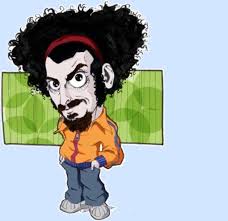

















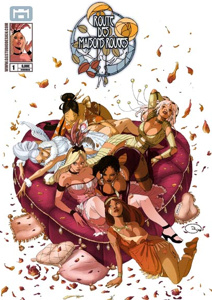



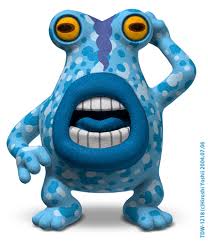
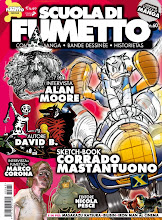













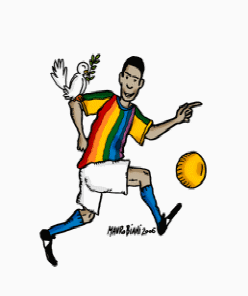






















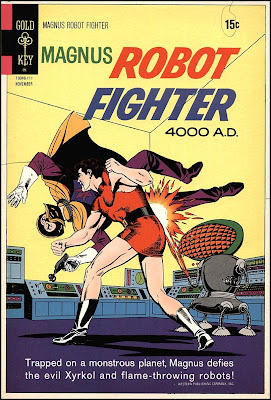















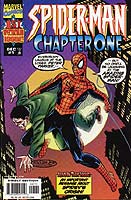













I think the admin of this web page is truly working hard in support of
his site, for the reason that here every data is quality based information.
I drop a leave a response whenever I like a article on a website
or I have something to add to the discussion. It is caused by the sincerness communicated in
the article I looked at. And on this article Daredevil/Love And
War 1 | COMICSANDO comic art blog. I was excited enough to post a thought 😉 I do have
a couple of questions for you if you usually do not mind.
Is it simply me or does it give the impression
like some of the remarks appear like written by brain dead people?
😛 And, if you are writing at additional places, I
would like to keep up with you. Would you list the complete urls of all your communal pages like your Facebook page, twitter feed, or linkedin profile?